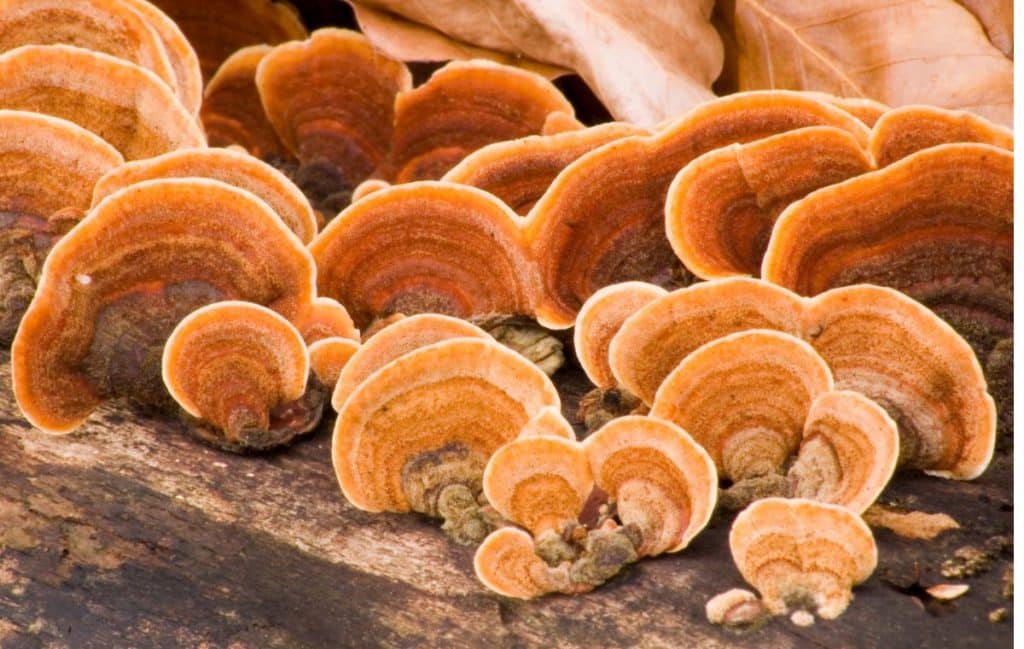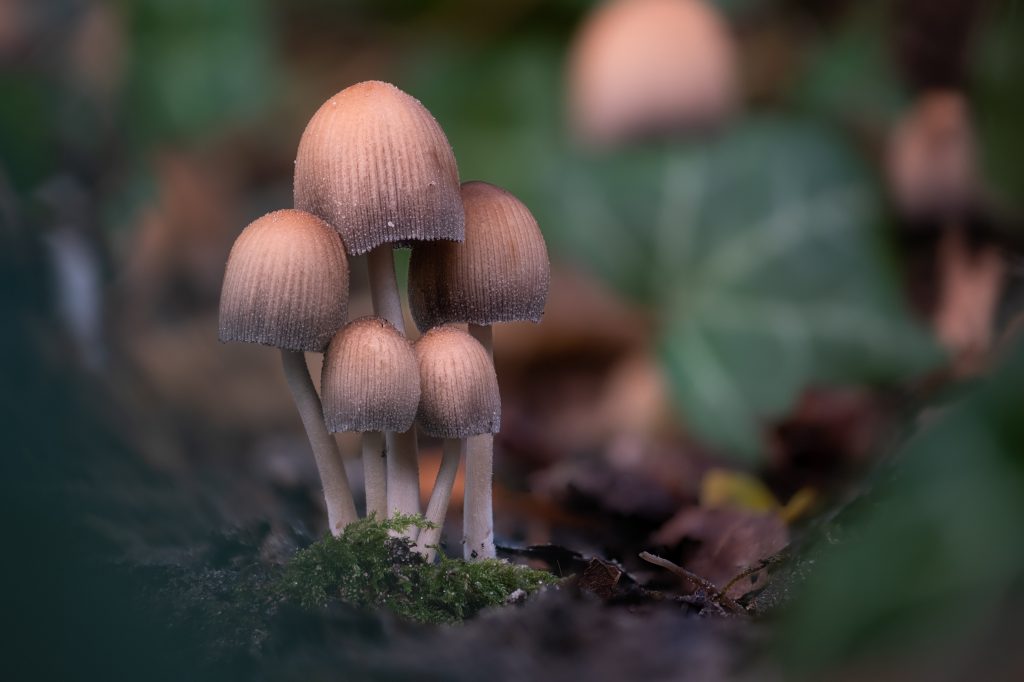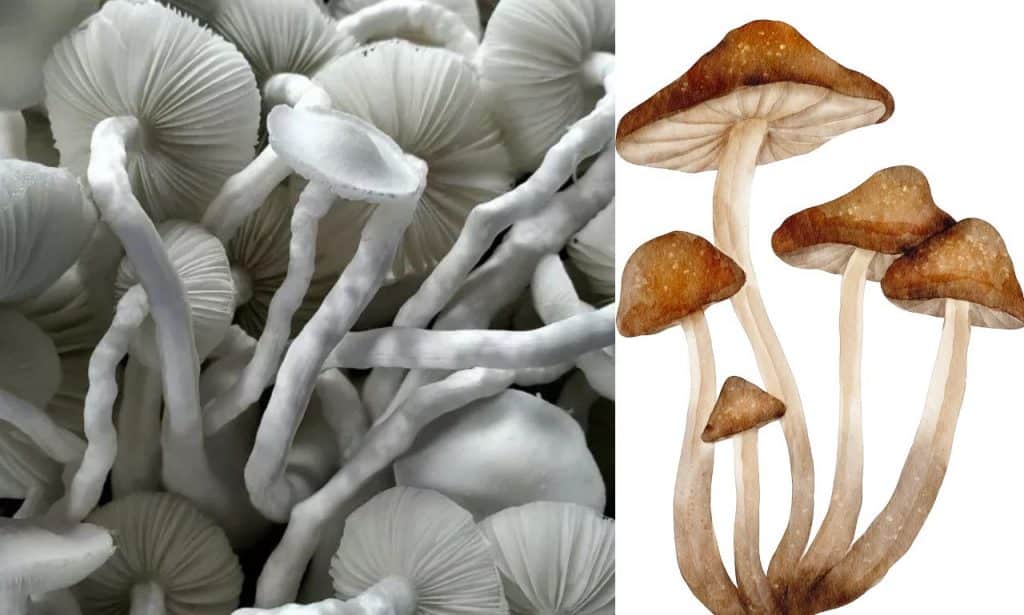Horse manure is a popular substrate for growing mushrooms due to its nutrient-rich composition. It can be used in a ratio of two parts manure to one part coco coir, with water added to reach field capacity.
Fertilizer can also be added to enhance the substrate’s nutrient content. The Agaricus arvensis, commonly known as the Horse Mushroom, is a specific species of mushroom that can be found growing on horse manure.
Introduction And Benefits Of Using Horse Manure As Mushroom Substrate
Horse Manure Mushroom Substrate
Horse manure is a highly beneficial and organic substrate for growing mushrooms. It offers several advantages compared to other substrates, making it a popular choice among mushroom cultivators. The nutritional value of horse manure is one of its key benefits. It contains essential nutrients like nitrogen, phosphorus, and potassium that are crucial for mushroom growth. Additionally, horse manure is rich in organic matter, which helps improve soil structure and fertility.
When used as a substrate, horse manure promotes increased yield and productivity. Mushrooms grown on horse manure often show healthier growth and larger fruiting bodies. This substrate provides a favorable environment for mushroom mycelium colonization, leading to faster and more robust mushroom production.
If you are considering mushroom cultivation, using horse manure as a substrate can be a wise choice. Its nutritional value, organic properties, and ability to enhance yield make it an excellent option for growing mushrooms.
Choosing The Right Horse Manure For Mushroom Substrate
Types of horse manure suitable for mushroom cultivation:
|
Quality indicators and considerations when selecting horse manure:
|
Sourcing horse manure locally or purchasing from suppliers:
|
Beyond the different types of horse manure suitable for mushroom cultivation, there are several quality indicators and considerations when selecting horse manure. These include the moisture content, age of the manure, presence of bedding materials, smell and appearance, as well as the presence of worms or insects. It’s important to choose horse manure that is well-aged and free from contaminants.
You can source horse manure locally by reaching out to farms or equestrian centers in your area. Alternatively, you can purchase horse manure from mushroom supply stores or online suppliers. Ensure that the horse manure you choose meets your quality requirements for successful mushroom cultivation.
Preparing Horse Manure For Mushroom Substrate
|
Horse manure is an excellent substrate for growing mushrooms. To prepare horse manure for mushroom cultivation, it is important to compost and sterilize the manure. Composting techniques help break down the manure, creating an optimal environment for mushroom growth. Balancing the moisture content and temperature during composting is crucial for creating the right substrate conditions. Adding supplements and amendments, such as vermiculite and gypsum, can greatly enhance mushroom growth. The recommended ratio for horse manure substrate is two parts manure to one part quar or vermiculite, with around five to ten percent volume of gypsum. By following these techniques and adjusting the parameters accordingly, you can prepare high-quality horse manure mushroom substrate for successful mushroom cultivation. |

Credit: www.go-compost.com
Mixing Horse Manure With Other Substrate Ingredients
Mixing horse manure with other substrate ingredients is crucial for creating an optimal growing medium for mushrooms. When combining horse manure with other organic materials, it is important to consider the proportions and ratios to ensure a well-balanced substrate.
Incorporating vermiculite, peat moss, and other components alongside horse manure helps create a nutrient-rich and moisture-retaining substrate. These additional ingredients contribute to the overall texture and structure of the substrate, providing an ideal environment for mushroom growth.
One important factor to consider is the carbon-to-nitrogen ratio. Maintaining a proper ratio is essential for fungal colonization and the success of the substrate. As a general guideline, a carbon-to-nitrogen ratio of around 30:1 is recommended. It is important to monitor and adjust the ratio as needed, based on the specific requirements of the mushroom species being cultivated.
Spawning And Inoculating Horse Manure Mushroom Substrate
|
When it comes to spawning and inoculating horse manure mushroom substrate, it is important to choose the right mushroom spawn. The spawn you choose should be compatible with horse manure substrate and have a high colonization rate. The process of inoculating the substrate with mushroom spawn is a step-by-step process. First, you need to prepare the substrate by pasteurizing or sterilizing it to remove any potential contaminants. Once the substrate is ready, you can mix it with the mushroom spawn, ensuring even distribution. During the colonization phase, it is crucial to maintain ideal temperature and humidity conditions. This will promote the growth of mycelium and prevent the growth of competing organisms. The ideal temperature for spawn colonization is typically between 70-75°F (21-24°C), and humidity should be kept around 90-95%. |
Caring For Horse Manure Mushroom Substrate During Colonization
To ensure successful colonization of horse manure mushroom substrate, it is crucial to maintain optimal environmental conditions. This includes managing air circulation, light exposure, and moisture levels. Adequate air circulation is important to prevent the growth of contaminants and promote healthy mycelium development. Ensure proper ventilation by providing small holes or air filters in your colonization containers or bags.
Light exposure should be kept to a minimum during colonization. Light can inhibit mycelial growth, so it’s best to keep the substrate in a dark or low-light environment.
Moisture levels are critical for substrate colonization. Maintain adequate moisture by misting the substrate with water if it starts to dry out. However, be cautious not to oversaturate it, as excessive moisture can create a breeding ground for contaminants.
During the colonization phase, it’s important to identify and address common issues promptly. Look out for signs of contamination, such as mold or unusual smells. If contamination occurs, remove and dispose of the affected substrate to prevent further spread.
By following these guidelines, you can maximize the chances of successful colonization of your horse manure mushroom substrate.
Encouraging Fruiting And Harvesting Mushrooms From Horse Manure Substrate
Encouraging Fruiting and Harvesting Mushrooms from Horse Manure Substrate Creating the ideal fruiting conditions for mushroom development: – Adjusting temperature: Maintain a temperature range between 60-70°F (15-21°C) for optimal mushroom growth. Use a thermometer to monitor and regulate the temperature if needed. – Controlling humidity: Maintain a humidity level of 80-90% for successful fruiting. Use a hygrometer to measure humidity and mist the substrate with water as needed to keep it moist. – Providing light: Although mushrooms do not require direct sunlight, they need some light for proper development. Indirect natural light or artificial grow lights can be used. Harvesting techniques to ensure maximum yield and prolong substrate life: – Selective harvesting: Harvest mature mushrooms while leaving smaller ones to continue growing. This allows for multiple harvests over time. – Twisting technique: Gently twist the mushroom cap at the base to detach it from the substrate. This minimizes damage to the mycelium and allows for continuous fruiting. – Proper substrate maintenance: Remove any decaying or moldy mushrooms promptly to prevent contamination and prolong the life of the substrate. Remember to maintain cleanliness and sterility throughout the process to ensure the health and productivity of your mushroom crop.Reusing And Recycling Horse Manure Substrate
Reusing and recycling horse manure substrate is a cost-effective and sustainable practice for mushroom cultivation. By rejuvenating spent substrate, growers can minimize waste and maximize their harvest. There are several methods for rejuvenating spent horse manure substrate for future use, including composting and incorporating it into garden soil. Composting allows for the decomposition of organic matter, transforming it into nutrient-rich compost that can be used as a soil amendment. Incorporating spent substrate into garden soil can improve soil fertility and structure, creating a favorable environment for plant growth. Additionally, recycled substrate can have potential applications in other agricultural practices, such as composting for organic farming or as a component in animal bedding. By implementing these techniques, growers can reduce their environmental impact and contribute to a more sustainable agricultural industry.
Troubleshooting Common Issues With Horse Manure Mushroom Substrate
If you are experiencing issues with your horse manure mushroom substrate, it is important to troubleshoot and resolve them promptly. One common problem is contamination during substrate preparation and cultivation. This can manifest as the growth of mold, bacteria, or other unwanted organisms in the substrate. To address this issue, it is crucial to identify the source of contamination and take steps to eliminate it. This may include adjusting the sterilization process, using proper hygiene practices, and ensuring the quality of the ingredients used.
Preventing substrate-related issues is also key to achieving success. This can be done by sourcing high-quality horse manure, properly pasteurizing or sterilizing the substrate, and maintaining proper temperature and humidity levels during cultivation. Regular monitoring and observation of the substrate can help in early detection of any issues, allowing for timely intervention. By following these tips and implementing effective substrate management practices, you can ensure a successful horse manure mushroom cultivation process.
Frequently Asked Questions On Horse Manure Mushroom Substrate
Can You Use Composted Manure For Mushroom Substrate?
Yes, composted manure can be used as mushroom substrate.
How Do You Sterilize Manure For Mushroom Substrate?
To sterilize manure for mushroom substrate, you can use a sterilizer or follow a recipe using two parts manure, one part coco coir, and water to reach field capacity.
What Is The Best Additive For Mushroom Substrate?
The best additive for mushroom substrate is horse manure, chicken manure, cow manure, or other types of manure.
What Is The Best Mushroom To Grow On Manure?
The best mushroom to grow on manure is horse, chicken, cow, or other types of manure.
Conclusion
Horse manure mushroom substrate is an excellent choice for mushroom cultivation. Its unique properties, such as its nutrient-rich composition and ability to retain moisture, make it an ideal substrate for mushroom growth. By using horse manure as a substrate, you can ensure that your mushrooms receive the necessary nutrients for healthy development.
Furthermore, horse manure mushroom substrate can be easily obtained and is a cost-effective option for cultivators. Whether you choose to purchase pre-made substrates or prepare your own, horse manure can be readily available and affordable. Additionally, the versatility of horse manure substrate allows for various mushroom species to be grown, providing a wide range of options for cultivators.
From gourmet mushrooms to medicinal varieties, horse manure substrate can accommodate different types of mushrooms. Horse manure mushroom substrate offers numerous benefits, including its nutritional value, moisture retention, affordability, and versatility. Incorporating this substrate into your mushroom cultivation process can greatly enhance your success as a mushroom grower.






